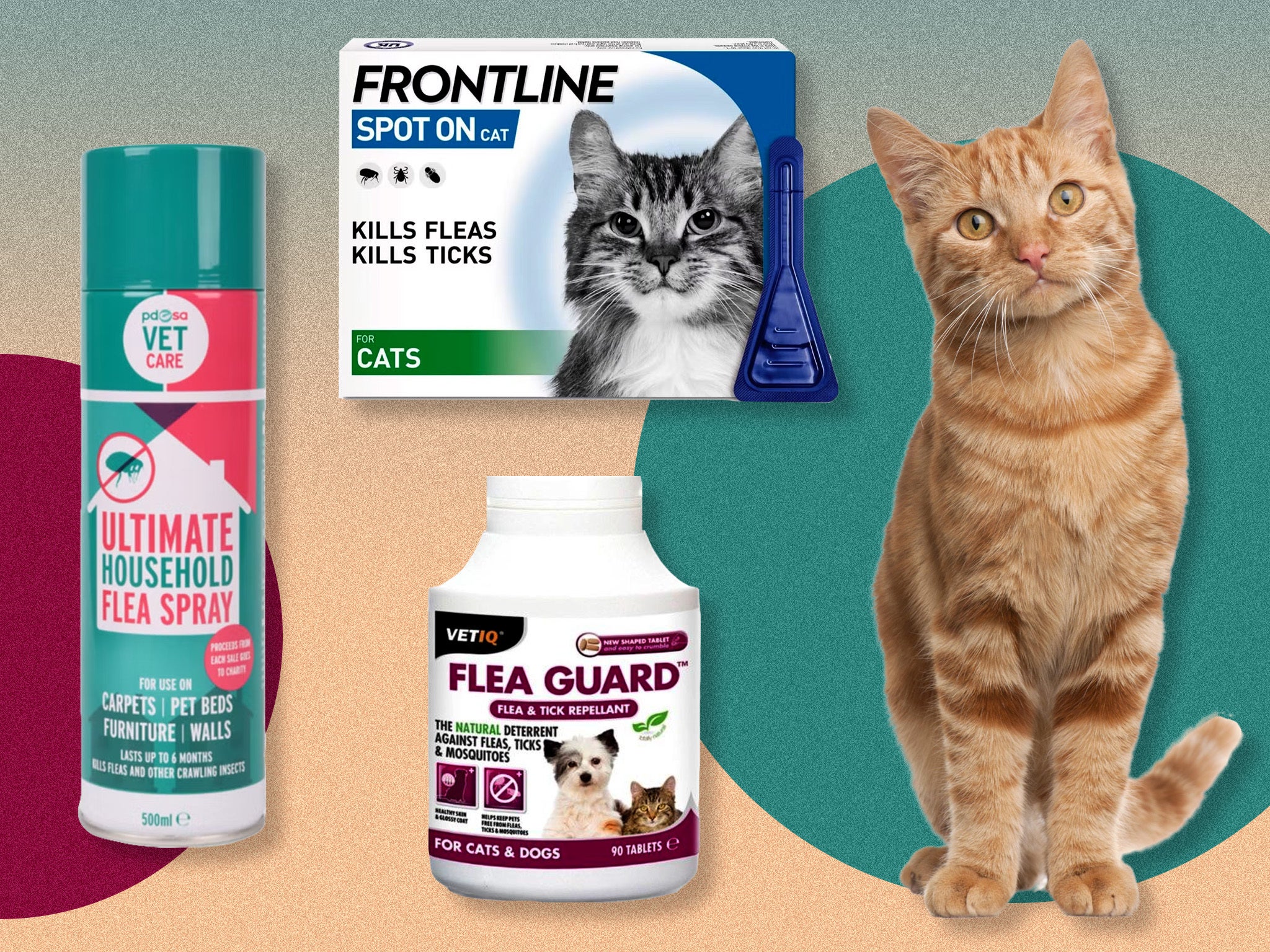The Independent's journalism is supported by our readers. When you purchase through links on our site, we may earn commission. Why trust us?
Vet-recommended flea treatments and preventatives for your cat, from spot-on to oral solutions
Leading experts share their advice on how to keep your kitty critter-free

When it comes to these tiny insects hitching a ride on our furry roomates, it won’t make a difference how clean our homes are – fleas can become a really pesky problem regardless.
According to Caroline Reay, head of veterinary services at Blue Cross, it can be easy for your cat to pick up fleas, even if they live indoors, as the wingless creatures can jump up to 100 times their body length and “can be easily brought into the house on shoes, clothing or other pets”.
In an ideal world we would want to prevent these insects from living rent free on our pets before they even get a chance, but if you are concerned that your cat may have already picked up fleas then there are some key signs to look out for. Dave Tweedle, veterinary surgeon at My Family Vets, says it is possible for a cat to have fleas “without you ever seeing a single one”, but symptoms can include scratching, hair loss, restless behaviour, biting, excessive grooming and flea dirt on the fur or skin.
If your cat has picked up fleas, then it is crucial that you catch on as soon as possible, as while they may seem small and harmless they can become an issue for cats when left untreated. When a flea bites your cat and its saliva enters the bite wound, some can suffer an allergic reaction, Tweedle says, explaining that in some cases sores can develop on their skin, which often become infected. What’s more, “kittens, elderly or sick cats can become weak and anaemic as a result of blood loss”. Fleas can also spread nasty diseases and are a common cause of tapeworms.
Thankfully there are a myriad of flea treatments to choose from, but Nina Downing, a vet nurse for the People’s Dispensary for Sick Animals (PDSA), recommends purchasing products from reputable retailers “as they tend to be safer and more reliable for your pet”.
Read more:
She adds that looking for solutions marked as “NFA-VPS” is a good idea too, as this means they can only be sold by someone (usually a vet, pharmacist or suitably qualified person) who knows about the products and can confirm your pet is healthy and receiving the right dose. “These will tend to be stronger than products that you can pick from a shelf,” Downing explains. “If you buy a NFA-VPS product, it’s likely that you will be asked the weight of your pet beforehand.”
It’s also important to consider which method will suit your cat’s temperament best. “Choose whatever will be the least stress for you both,” Reay says. “If your pet easily takes tablets in food, then choose those, otherwise go for a spot on and use food or treats as a distraction while it’s applied. The calmer you are, the more you’ll help to reassure your pet.”
So, what are the main types of flea treatment worth investing in? To find out, we spoke to leading veterinary practitioners. From spot-on solutions to oral treatments and techniques to treat your home, these are the best ways to keep your living space free from critters.
Topical flea medication or spot-on treatments
One of the most popular types of flea treatments are spot-on or topical solutions, which “are applied to the skin on the back on your cat’s neck and work by the active ingredients being absorbed through the cat’s skin into their body”, says Downing. These treatments kill fleas living on the cat and will also prevent future infestation for a while after they’ve been applied.
If this type of treatment sounds like it could work for your feline, Downing recommends opting for Frontline’s spot on flea and tick control for cats (£13.99, Amazon.co.uk), which says it kills fleas on your pet within 24 hours and will continue to protect them for up to a month.
Alternatively, she suggests investing in Flea Screen Combo’s spot-on solution (£12.99, Amazon.co.uk) which is a UK-veterinary-licensed flea and tick treatment for cats and kittens from eight weeks old. The treatment is available in one size for cats weighing 1-8kg.
Oral treatments
Another option is to give your cat an oral treatment, which comes in the form of a capsule or tablet. Tweedle says “flea tablets work by the active ingredient being absorbed from the gut and taken into the bloodstream, which then kills fleas when they bite your pet”.
Before purchasing an oral treatment, it’s important to know that different medications use different chemicals, with some working very quickly but only lasting for a few days, and others working over several months.
A great solution for owners who struggle to apply topical treatments or for cats that have sensitive skin which reacts to spot-on products, VetIQ’s flea guard tablets (£10.20, Supplementsolutions.co.uk) contain a blend of B vitamins, yeast, zinc and garlic, which the brand says help to make your pet’s blood less palatable to fleas, ticks and mosquitoes.
Flea treatments for your house
With your cat taken care of, Reay says it is “really essential to treat the house as well”. She recommends using a vacuum first to get the eggs (which are very resistant to chemicals) to hatch and then use a spray.
The PDSA has its own household flea spray (£10.99, Pdsapetstore.co.uk), which kills both existing fleas and their eggs, ensuring the flea life cycle is properly broken. The spray claims to prevent the development and growth of flea eggs and larvae in the home for up to six months and can also be used to target other pests such as cockroaches and silverfish.
You can also pick up this Virbac indorex defence household flea spray (£14.95, Amazon.co.uk), which kills adult fleas and house dust mites for up to two months after application. When using, hold the can at arm’s length and direct the spray towards the area you want to treat.
Whichever product you choose, Reay adds that it’s vital to follow the directions on the can carefully and to always “air the room before you allow your pet (or yourself) back in”. This is because household flea treatments can be particularly toxic to cats, so make sure they don’t sneak back into the treated area before it’s dried.
Voucher codes
For the latest discounts on cat food and other pet essentials, try the links below:
Is your kitty always drinking out of the tap? Read our guide to the best cat water fountains to keep your furry friend hydrated
Subscribe to Independent Premium to bookmark this article
Want to bookmark your favourite articles and stories to read or reference later? Start your Independent Premium subscription today.
